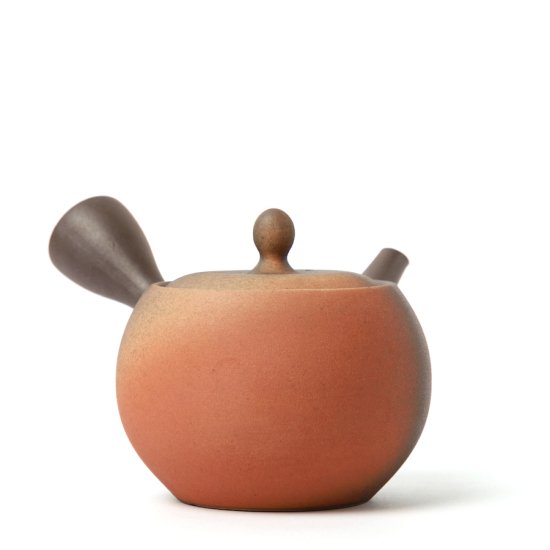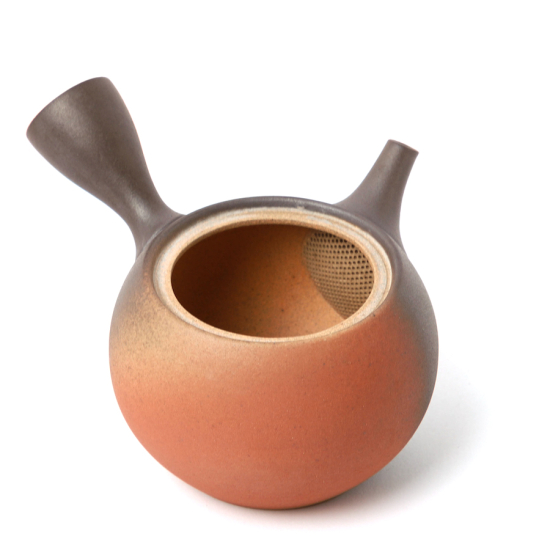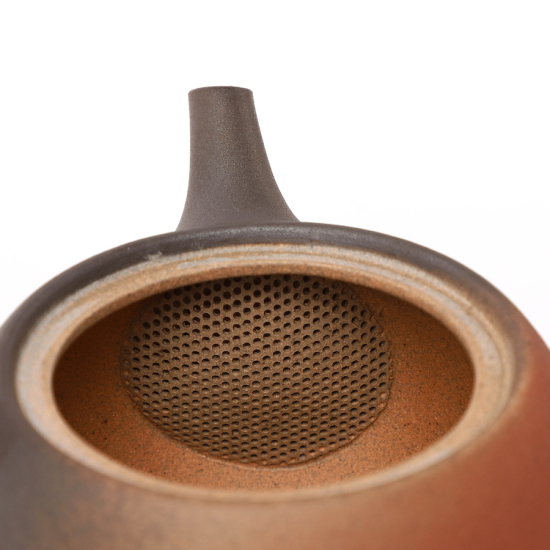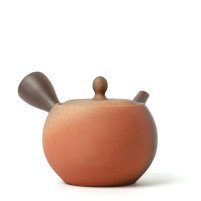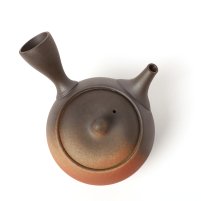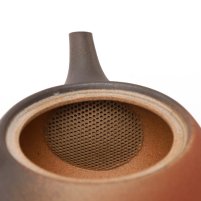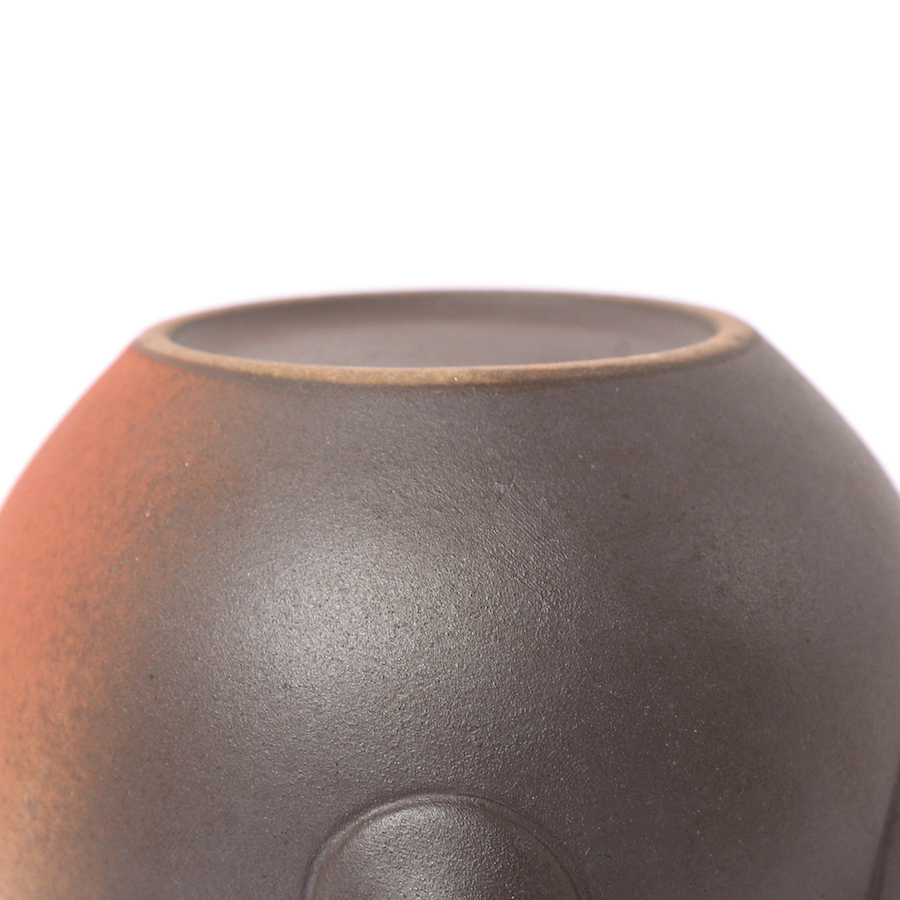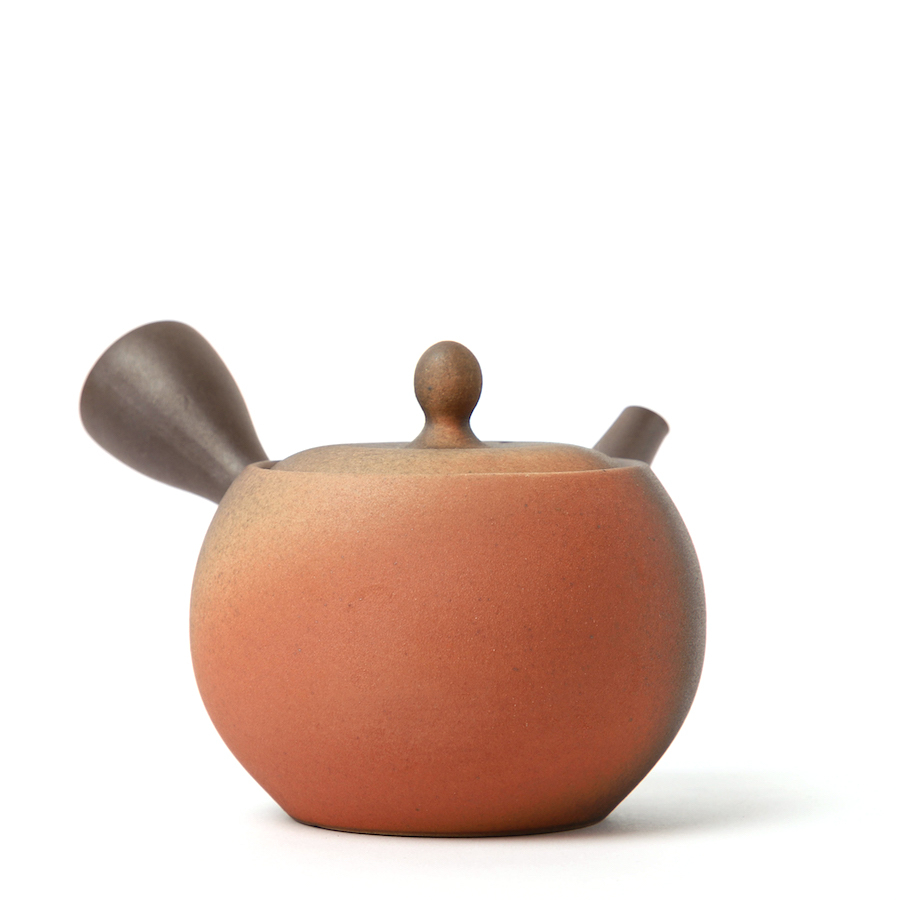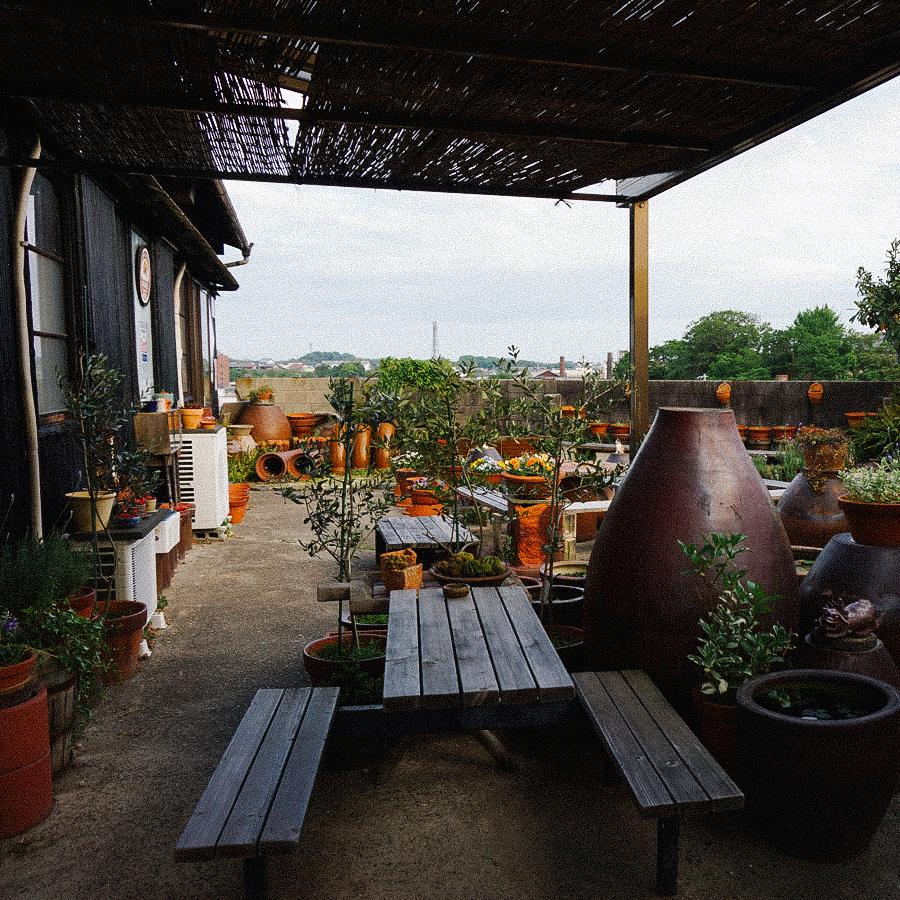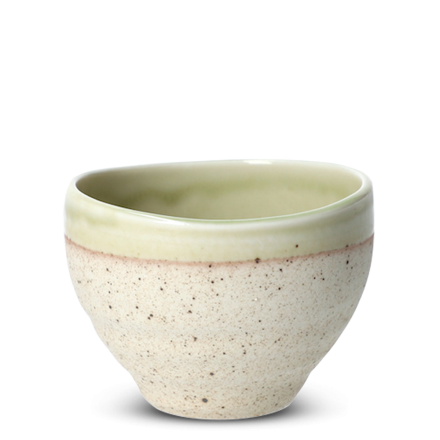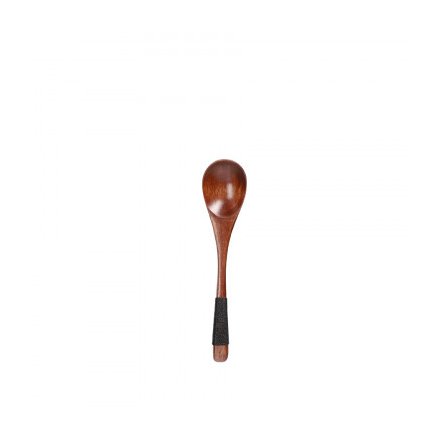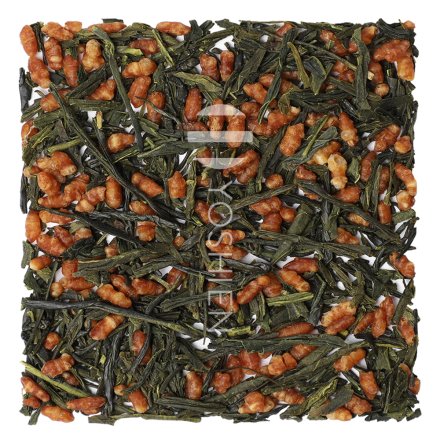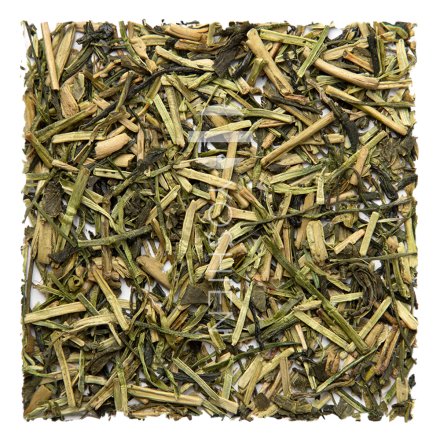Ikomi 鋳込み
This Kyusu is made using the Ikomi method, also known as pressure or slip casting, where liquid clay, or slip, is poured into and shaped in a plaster mould. The process makes it possible to make complicated shapes and is suitable for producing larger quantities.
Yōhen 窯変
Written as “kiln change” Yōhen refers to the variations in colour and texture of ceramics that happen during firing. This technique is a feature in various Japanese pottery styles including Tokoname, Shino, Bizen and Tenmoku. Within Tokoname-yaki the two-tone ombré effect is often achieved by partially burying a red, oxidation-fired item in rice husks or ashes and refiring it in a reduction furnace, which will turn the exposed part black, while leaving the buried part red.



